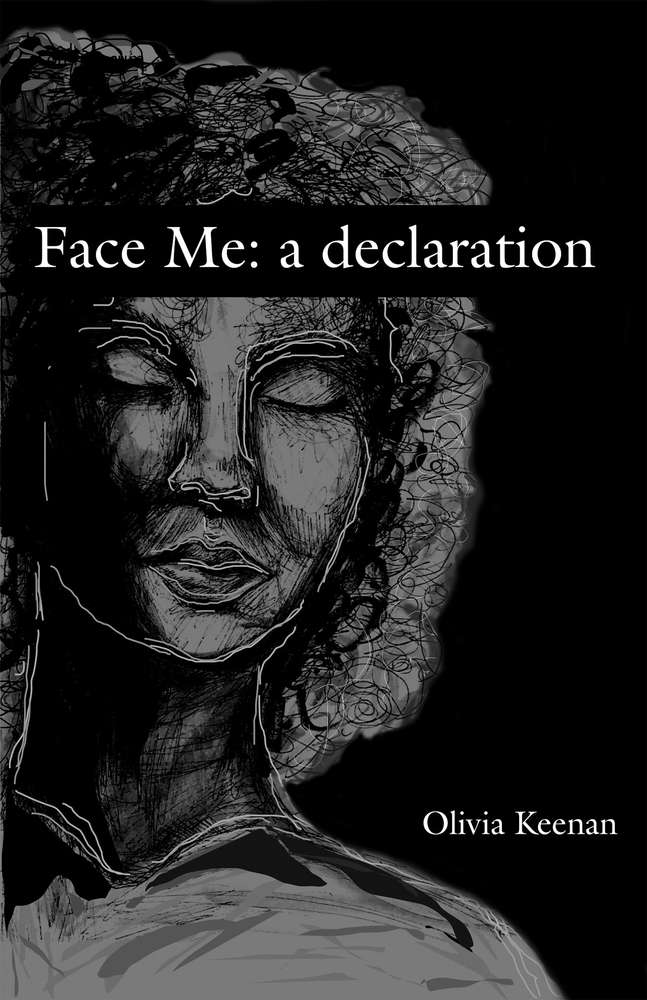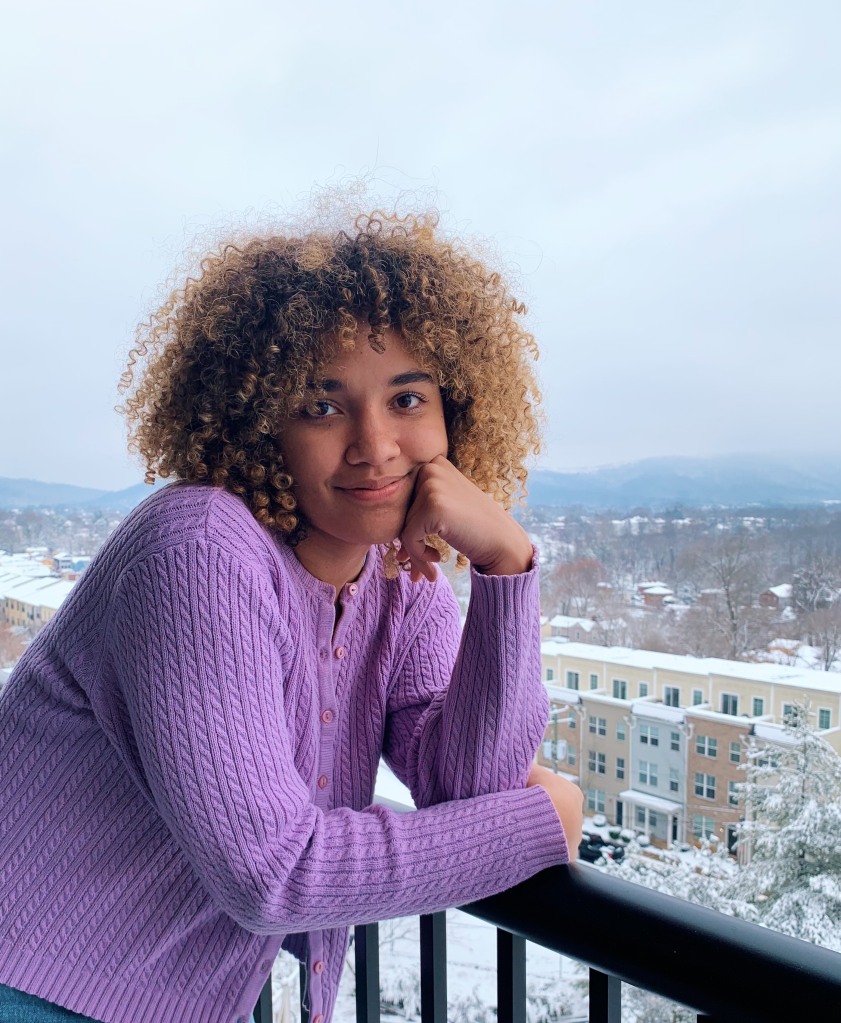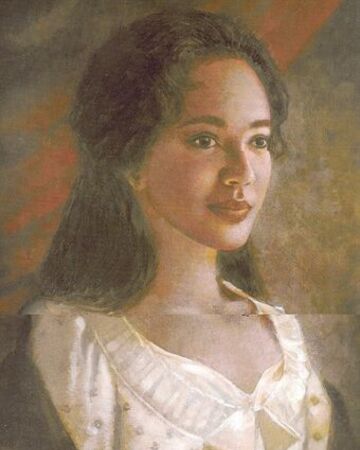Poetry Collection

Face Me: a declaration reveals the complexities of a mixed race identity through religion, sex, American history, and colorism. The poems in Face Me reject any white supremacy that dictates Biblical interpretations, historical truths, and beauty standards. This collection of poems follows a journey that begins in uncertainty, but concludes in celebration. Within its pages, declarations are unwaveringly signed and spoken. Black bodies are praised and exalted. Faith is reexamined and reclaimed. And Face Me exists not as a question, but as a command.
Interview
Thank you so much for your time and for offering me the opportunity to read your poetry collection, Face Me: a declaration, Ms. Keenan! So far, I’ve read it twice, and each time something new jumps out at me.
Adira: What was your inspiration for Face Me: a declaration? Did you always know you wanted to write this work in the form of poetry, or did you have another medium in mind?
Olivia Keenan: I have been writing poetry since I was in middle school, and I have always been especially inspired by slam poetry. A lot of the poems in the book came from slam poems I wrote and performed during open mics at my university. Therefore, it was always a book of poems, but many of the poems were inspired by pieces I wrote to be performed as spoken word.

A: I ask this because you have some stunning pictures included in your collection that offer readers a glimpse of the very body you are seeking to reclaim in your poetry. Is there a story behind these photos?
OK: Yes, there is a story behind the photos. I took a photography class in high school, and I think that is where I learned about the power of photos, especially when accompanied with words. Therefore, I wanted to incorporate photography alongside the journey of the poems. While the poems were inspired by slam poetry, the photos were inspired by the poems.
I have four sets of photos: one of my face, one of my feet, one of my hands, and a final one of my stomach. The same picture or a similar picture of each of these body parts shows up in each section of my book. So, I wanted the photos of the first part to not only embody the themes of the first section (shame, hurt, pain), but to also show a sense of growth within the other photos from the second and third section.
A: There are three sections in Face Me: a declaration: “exposition,” “development,” and “recapitulation.”
In each section, you take care in showing the speaker, who is a Black woman of mixed-race heritage, as she’s gradually coming undone and then carefully stitching herself back together again to reestablish her identity on her own terms. In the final section, readers see the speaker reveling in her agency and taking ownership of her body.
As a writer, did you find that your experiences as a Black woman of mixed race impacted the topics you explored in your collection? If so, were there any real-life moments or emotions that found their way into your writing?
OK: I love this question! And I love the way the question encapsulates the purpose of the three sections in the book. The poems are full of my experiences; sometimes the book feels like an autobiography of my journey through high school and college. For example, most of the poems in the first section are inspired by my experiences in high school and the beginning of college, which was a time where I was most ashamed of my body and myself. I discuss being Black in suburbia and suburban high schools, and being mixed in a very segregated city. I go to the University of Virginia, which was founded by Thomas Jefferson, and when I first entered, I had an idealized view of Jefferson from my previous education. My experiences in high school and the beginning of college were heavily influenced by my desire, or need at times, to please white people (especially white men). So I think the first section is most influenced by those themes.
In the second section, my experiences as a freshman in college are dominated by an enlightenment of sorts. I start to question the religious groups I am a part of, and to question my desire to please white Americans (such as Jefferson). The section also includes experiences I’ve had with men in college, and exposes how I feel about my body when I, too, look at it through a white gaze. Therefore, I think this section reveals moments when I recognize where my shame is coming from, or when my hurt and pain come from white superiority.
In the final section, my most recent emotions come to light. But these experiences are somewhat more abstract. The section more so signifies a period of reclamation and celebration of the body and mind. It isn’t a one-time experience, but rather months of reflection.
A: You start your collection off with “click.” Here, your speaker appears to be parsing through her feelings about the murder of a Black man while also showing moments where she is unsure about her own Blackness. She does this while also succumbing to moments where her implicit bias toward other Black people peeks through in times of panic. Why was it important for you to start your poetry collection simultaneously tackling all three of these issues?
OK: I think it was important for me to start the poetry collection with this because it was one of the poems that kicked off the whole project. Most of the poems are heavily edited and revised. This poem was written hastily at like 3 AM during the summer of 2020. It is not heavily edited, and it tackles things through a stream of consciousness style of writing. I wrote it minutes after watching a video of the murder of George Floyd on Instagram. I wanted to show right away the desperation of my poetry, and how one instance of violence towards Black people impacted me in so many ways. It made me scared, and confused, and ashamed, and angry. I thought a poem that dealt with so many issues, in such a desperate way, would start off the book appropriately– in order to show readers why I needed to write to parse through so many layers of emotions.
A: One of the things that drew me to Face Me: a declaration originally was your reading of “princess mobutu” on Instagram.
The line where you state, “I am not a slave story/ I am not enslaved to a story,” feels apropos in a time where African-Americans and Americans alike are beginning to come to terms with the fact that our race has been pigeonholed into having our stories start (and sometimes end) with American Chattel Slavery as the nation’s only reference point to who we are expected to be.
With this in mind, is there a specific audience or moment in American history that you are speaking to with your work?
OK: I’m glad you pointed out that line, because I think it embodies most of what I was trying to get across in the poem. The specific, intended audience of the poem is girls like me: especially little Black girls who need a Disney princess who looks like them. Unfortunately, most of the representation I saw of Black people in movies as a young girl had to do with slavery or struggling through racism. Rarely did I just see a Black woman enjoying life, or being rescued by the prince, or being a superhero! Therefore, that line is Princess Mobutu claiming she is not “enslaved” to any stories of struggle and pain. Princess Mobutu claims her own story, and that is a character I know I would have benefitted from seeing as an impressionable young girl.
A: The theme of fetishization of Black and female bodies appears to play a major role in poems, like “white boys still don’t let me sign the damn declaration of independence” and “Me and Jefferson.”
In these two poems, I’m reminded of the tug-of-war between how historians see Sally Hemings and her historical battle to establish agency over her body as a Black woman who was enslaved and engaged in a “relationship” with her enslaver, Thomas Jefferson, to your speaker. Even though these Hemings and your speaker exist in two separate eras of American history, the fact that they’re both wrestling to have ownership over their bodies and sexualities under the White male gaze doesn’t feel too far off.
Was this connection between your speaker and Sally Hemings intentional in your work?
OK: There is definitely a connection between my speaker and Sally Hemings in my work, but I also intentionally keep it ambiguous. As I mentioned previously, I am a student at the University of Virginia, which is a place where Thomas Jefferson is heavily discussed, both to be idolized and criticized. So it wasn’t until I was in college that I made the connection between Sally and I, but all of the emotions in the book towards my body and the white male gaze have been there my whole life — before I ever knew who Sally Hemings was. I wanted to demonstrate how history repeats itself, even as a university student in 2021. But I also wanted to keep any connections nameless, because I know many Black women of all ages and time periods can relate to wrestling with their own bodies and sexualities in a much similar way.
I also mention Jefferson a lot, and I make sure to mention him by name. And I think when people see Jefferson juxtaposed with a Black woman, they immediately think of Sally Hemings. I wanted this effect, once again, to accentuate the cyclical history of fetishization of Black female bodies.
A: The same way historians grapple with the question of Sally Hemings ability to have a “consensual” relationship with Thomas Jefferson because of her status as an enslaved woman feels similar to how Christianity has modified the original meaning of the Song of Songs in the Bible’s Old Testament to fit their message.
While there’s little evidence of it in the text, many Christians and Jews have taken to using the Song of Songs as an allegory for “Christ’s love for His bride, the church” instead of a poem about mutual desire and a woman being in command of her sexuality. In the “recapitulation” section of Face Me: a declaration, though, we continuously see your speaker reclaiming passages of this Biblical text and remaking it to fit her sexual desire.
As a person of faith who lives in a time when sexuality, especially for women and female-bodied persons, is heavily guarded by the messaging in traditional Christianity, why did you feel it was important to insert this message of female agency and ownership into your poems?

I think it was important for me to insert this message into my poems because the book begins in a place of shame and rejection. And I wanted to include all the ways I’ve felt ashamed, because being a Black female in America is so multi-faceted and intersectional. I’ve felt rejected by America and American history, or white individuals in my life, or educational institutions, and I’ve especially felt rejected from Christianity. Therefore I think most of my shame was rooted in Christianity, particularly from what I’ve been told by white Christians.
Throughout the beginning of the book I seem to think that my “liberation” can be found if I please the white gaze, or even if I succumb to being sexualized by the white gaze. At the same time, I felt ashamed for merely being sexual, or having sexual desires. The book concludes where I reclaim the beauty of my body, and understand that I can find liberation when I reject the white gaze. Rejecting the white gaze also means rejecting shame I’ve accumulated from Christianity. So I am also liberated from sexual shame, and can reclaim the beauty of my sexual being and desires.
A: What writers or pieces of art have influenced your writing?
OK: My poetry is heavily influenced by slam poetry, both of my own and of others’. It is therefore influenced by contemporary Black poets who also partake in slam poetry and spoken word. Some of these poets include Danez Smith, Jericho Brown, and Raych Jackson. I think some of my descriptions and understandings of God are influenced by The Color Purple by Alice Walker and Mary Oliver. My interactions with the history of Thomas Jefferson are inspired by Mistress by Chet’La Sebree. The photos are influenced by black and white photography in general. But I particularly love the book Citizen by Claudia Rankine, and how that book uses photography with poetry and the written word.
A: Do you have any advice you would give to people who want to write?
OK: My biggest advice is to take advantage of the time you have to write. I don’t think I would have been able to write a book if not for COVID. Because of COVID, all of my plans for the summer of 2020 were cancelled, and then when the school year started, most of my extracurricular activities were postponed too. This meant I had a LOT of time to write, and I took advantage of that time. Even when I wasn’t writing specifically for my book, I was taking time to journal or write random poems. I think my consistency with writing when I had time also improved my mental health and self-confidence during a difficult year. Finding time to write about literally anything is one of the best moves I made in the past year!
A: I want to commend you on how raw and evocative your writing is in Face Me: a declaration. There’s so much depth to your work that I keep thinking about the poems well after I’ve closed the collection’s pages. Are you working on anything new readers can look forward to?
OK: I am not working on anything right now — I think I am pretty tired! But I am an English Major with a concentration in Poetry writing, so I will have to write a manuscript in my final semester of college (in two years). I think that by that point I will feel refreshed again, and hopefully another collection will come then! I also do open mics at my university, so maybe I will have a few new performance poems in the upcoming year!
A: Thank you so much for your time and the opportunity to review your poetry collection, Ms. Keenan. I can’t wait to see what you publish next!
Thank you so much for your wonderful and thoughtful questions! I loved answering these, and I appreciate you taking the time to do all of this 🙂







